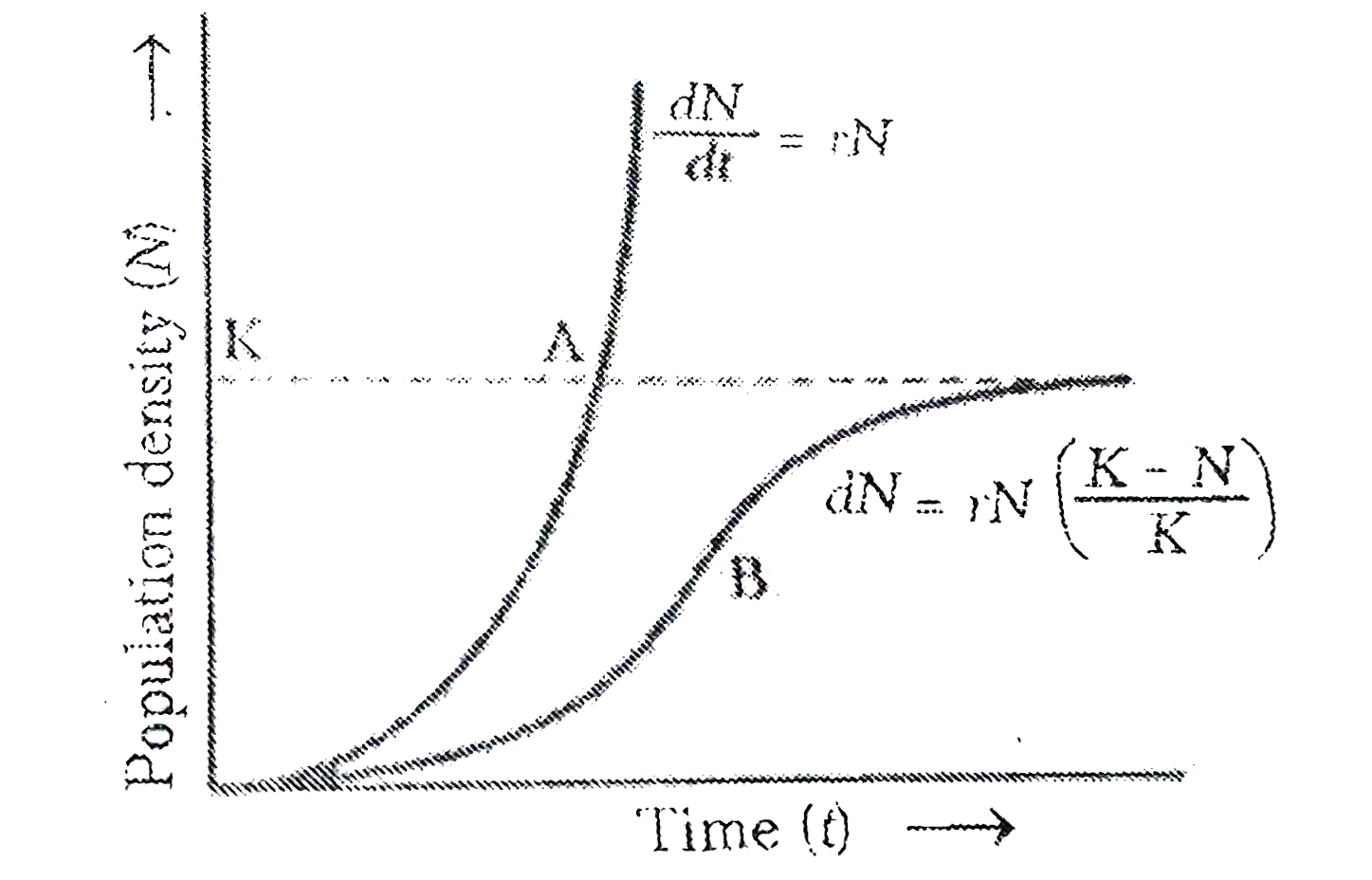Population growth curve in most animals , except humans, is
S - shaped
J - shaped
J - shaped with tail
S - shaped with tail
The correct Answer is:A
To answer the question regarding the population growth curve in most animals, except humans, we can break down the solution into the following steps:
Step 1: Understand Population Growth Curves
Population growth curves represent how the number of individuals in a population changes over time. There are two main shapes of these curves: the S-shaped curve (logistic growth) and the J-shaped curve (exponential growth).
Hint: Remember that the shape of the curve indicates the growth pattern of the population over time.
Step 2: Identify the S-shaped Curve
The S-shaped curve, also known as the logistic growth curve, typically occurs in populations where resources are limited. Initially, the population grows slowly (lag phase), then rapidly increases (exponential phase), and eventually stabilizes as it reaches the carrying capacity of the environment (stationary phase).
Hint: Think about how limited resources affect population growth; it leads to stabilization after rapid growth.
Step 3: Recognize the J-shaped Curve
In contrast, the J-shaped curve represents exponential growth, which can occur when resources are abundant and environmental factors do not limit growth. This is often seen in human populations due to advancements in technology and medicine that allow for higher growth rates.
Hint: Consider how advancements in technology can alter the growth patterns of a population.
Step 4: Compare the Two Curves
Most animals exhibit an S-shaped growth curve due to the natural limitations of resources in their environments. In contrast, humans have a J-shaped growth curve because of our ability to overcome resource limitations through technology and innovation.
Hint: Focus on the differences in resource availability and technological advancements between humans and other animals.
Step 5: Conclusion
Based on the understanding of these growth curves, we conclude that the population growth curve in most animals, except humans, is S-shaped.
Final Answer: The population growth curve in most animals, except humans, is S-shaped.
Population growth curves represent how the number of individuals in a population changes over time. There are two main shapes of these curves: the S-shaped curve (logistic growth) and the J-shaped curve (exponential growth).
The S-shaped curve, also known as the logistic growth curve, typically occurs in populations where resources are limited. Initially, the population grows slowly (lag phase), then rapidly increases (exponential phase), and eventually stabilizes as it reaches the carrying capacity of the environment (stationary phase).
In contrast, the J-shaped curve represents exponential growth, which can occur when resources are abundant and environmental factors do not limit growth. This is often seen in human populations due to advancements in technology and medicine that allow for higher growth rates.
Most animals exhibit an S-shaped growth curve due to the natural limitations of resources in their environments. In contrast, humans have a J-shaped growth curve because of our ability to overcome resource limitations through technology and innovation.
Based on the understanding of these growth curves, we conclude that the population growth curve in most animals, except humans, is S-shaped.
Topper's Solved these Questions
Similar Questions
Knowledge Check
Most realistic growth curve is
AJ-shapedBSigmoidCParabolicDBoth (a) & (b)Human population growth in India.
Atends to follow a sigmoid curve as in case of many other animal speciesBtends to reach zero population growth as in case of some animal speciesCcan be reduced by permitting natural calamities and enforcing birth control measuresDcan be regulated by following the national programme of family planningPopulation growth curve is sigmoid, if the growth pattern is
ALogisticBGeometricCExponentialDAccretionary
The graph shows two types of population growth curve A is exponential and B is logistic.

Which one of the following growth model considered as more realistic one?
View SolutionIn sigmoid populations growth curve, the initial stage of the curve is called :
View SolutionHuman population growth is:
View SolutionPopulation growth-curve is sigmoid, if the growth pattern is
View Solution[A]: Growth curve is the graphic representa- tion of the total growth against time.
[R]: Population growth curves are of two types-J shaped and S shaped
View Solution